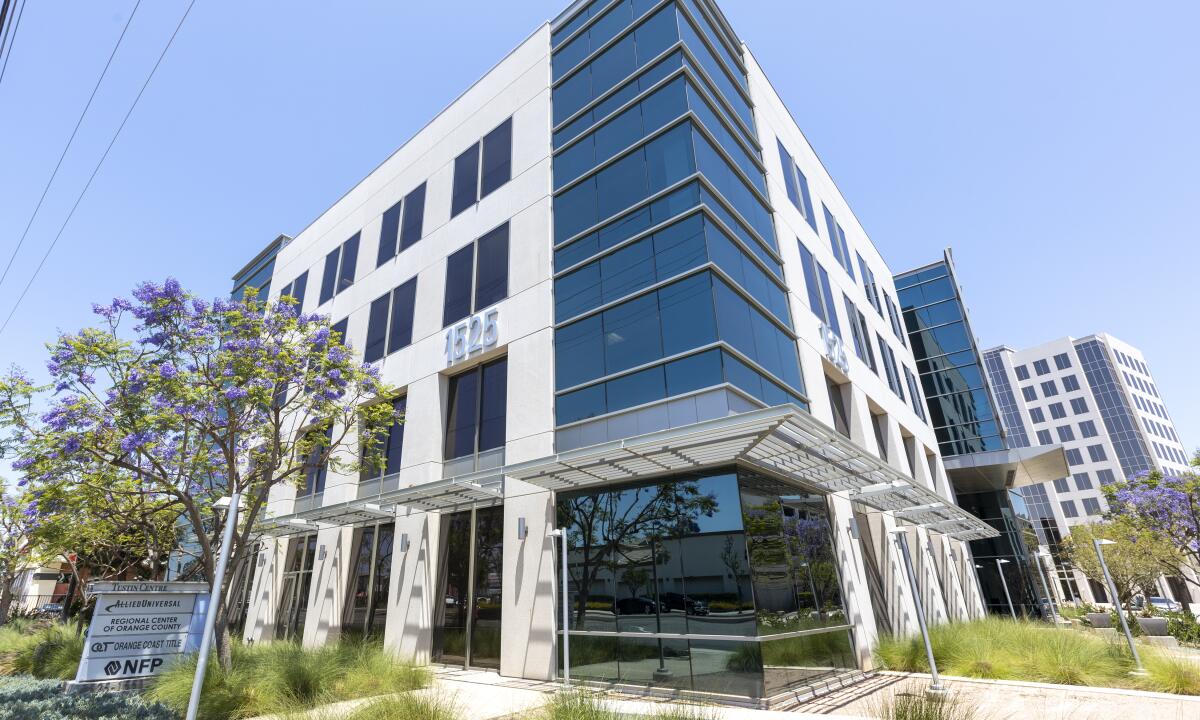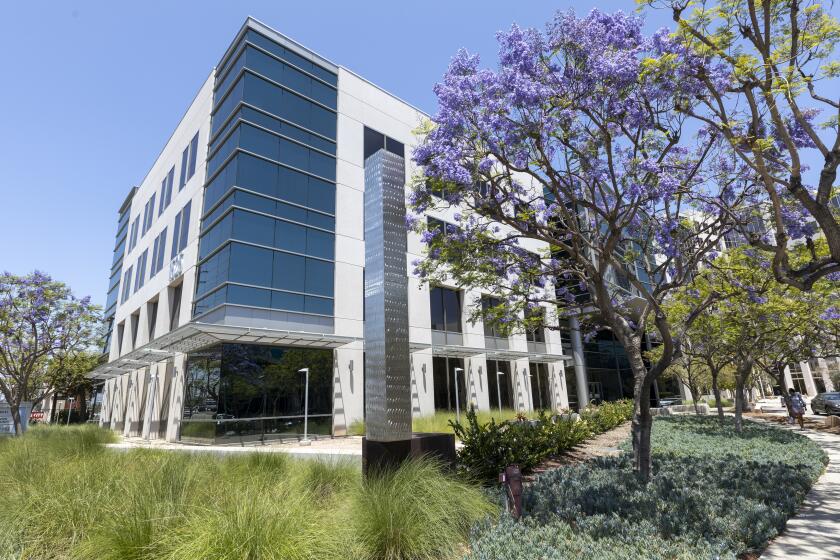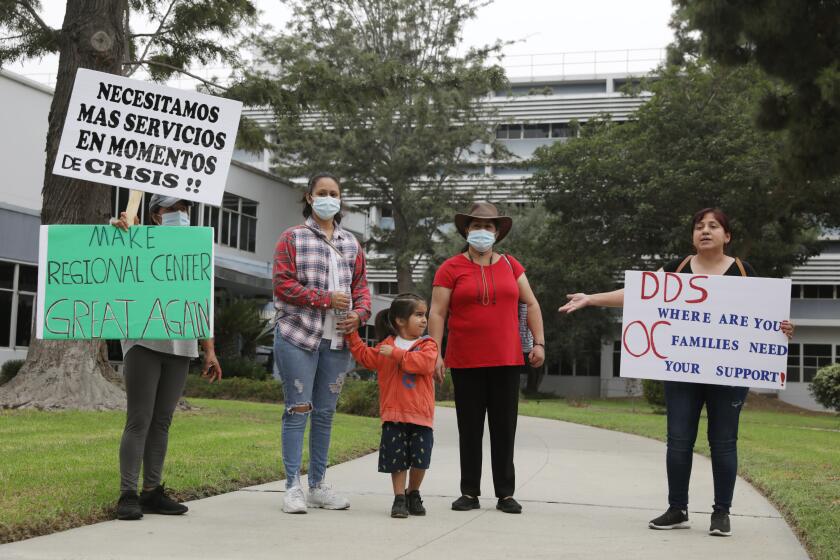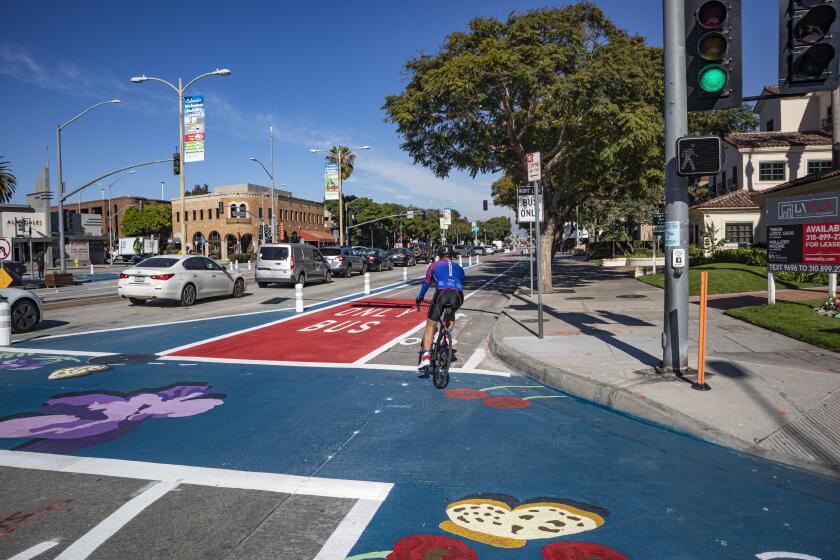Editorial: Race and geography limit service for disabled Californians. That’s wrong

- Share via
Californians with debilitating forms of autism, epilepsy, cerebral palsy and intellectual and other developmental disabilities are entitled to crucial services from 21 private nonprofit agencies known as regional centers, which contract with the state Department of Developmental Services.
The centers determine whether a person is eligible for services and provide diagnoses and counseling. They help more than 400,000 adults and children create individual program plans — road maps of resources intended to protect their right to make their own decisions and live as independently as possible. The centers contract for services, such as 24-hour care, group homes and independent living, depending on individual need.
Before the regional center system was established, the state offered little to people with developmental disabilities besides institutionalization or abandonment. The centers are a vast improvement, enabling many people to live with others or on their own in a support network that may include family, clinicians and professional advisors.
Racial and ethnic gaps in spending on services for California children and teens with developmental disabilities persist, a new report has found.
But it’s far from perfect. The accessibility of services and even the spending per case vary among the centers, so a person’s quality of life and hope for the future may be determined by geography.
Or by race. More than a decade’s worth of reports and studies have shown a stark disparity among clients — called consumers in the developmental disability arena — who are white and those who are people of color.
For example, a Times story from 2012 reported that autistic children with well-to-do parents (who are more likely to be white) with the time and resources to navigate the system got much better care. These parents are more likely to overcome what is sometimes called the “culture of no” at regional centers, and are less likely to be thwarted by language or literacy barriers. Too little has changed in the decade since then, despite efforts to fix the problem with grants.
In fact, funding inequity between white and Latino children has worsened at most regional centers, according to a report last year by the justice advocacy group Public Counsel.
Similar disparities have been noted for adults, although the racial differences are not always what one might expect. For example, the Lanterman Regional Center, which serves much of Los Angeles County, had the largest spending disparity among racial groups, with African American adults living at home receiving $8,561 more in services their Latino counterparts, according to a report by the advocacy group Disability Voices United.
That’s a noteworthy problem at a time when diagnoses of autism among Black and Latino children recently surpassed similar diagnoses for white children for the first time, according to the Centers for Disease Control and Prevention.
Additional disparities arise when people with disabilities and their families challenge decisions made by the teams that are supposed to support them. According to a report from disability rights groups and the Stanford Intellectual and Developmental Disabilities Law and Policy Project, people who can afford lawyers can get fair court hearings and sometimes overrule or come to an accord with their planning teams. Those without the resources to hire legal counsel too often can’t.
Spending on services for Californians with developmental disabilities varies widely by race, ethnicity and where they live, according to a new report.
The Little Hoover Commission conducted a series of hearings on the racial and geographical disparities in the regional center system and on Monday issued a report, with recommendations that include legislation to improve service delivery and shore up data collection and analysis.
The state auditor recently studied the Department of Developmental Services and three of the 21 centers, and made recommendations to improve oversight and quality control.
A bill that covers many of the recommendations from the two reports comes before a key Assembly committee Tuesday.
AB 1147 by Dawn Addis (D-Morro Bay) would be an important step toward making the system more equitable, transparent and accountable. It would set a two-day deadline for regional staff to return phone calls, addressing the anger and frustration many consumers and families feel when they are not getting their questions answered. It would also shorten the time permitted to determine eligibility for services. It would give people in need of services more control over their care plans. It would make regional centers subject to the Public Records Act for salaries, service policies and disparity data.
In short, it could bring the regional center system into the 21st century, and provide better and more equitable care for hundreds of thousands of Californians.
More to Read
A cure for the common opinion
Get thought-provoking perspectives with our weekly newsletter.
You may occasionally receive promotional content from the Los Angeles Times.












